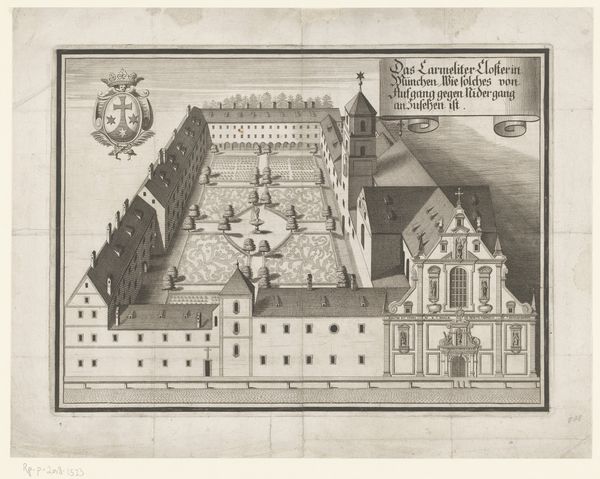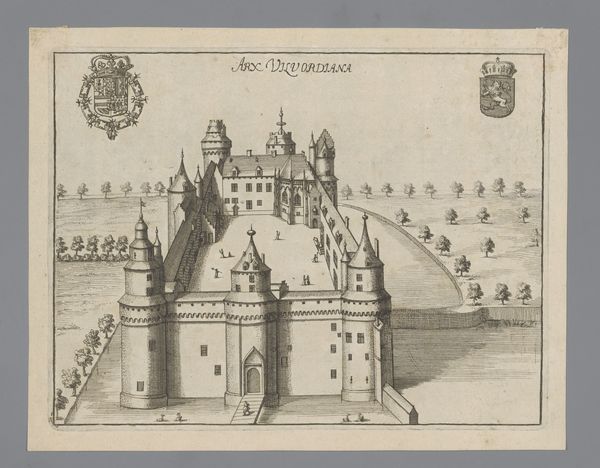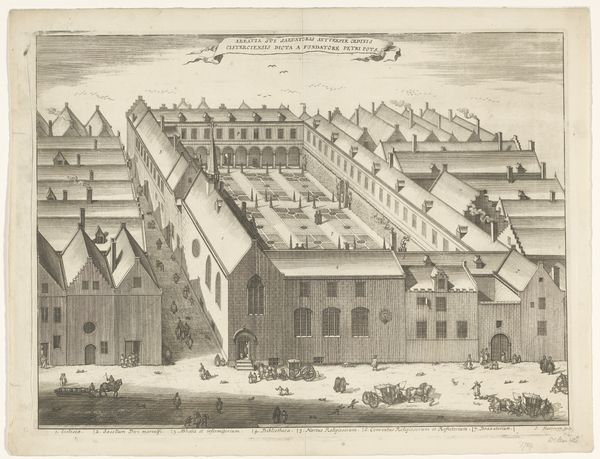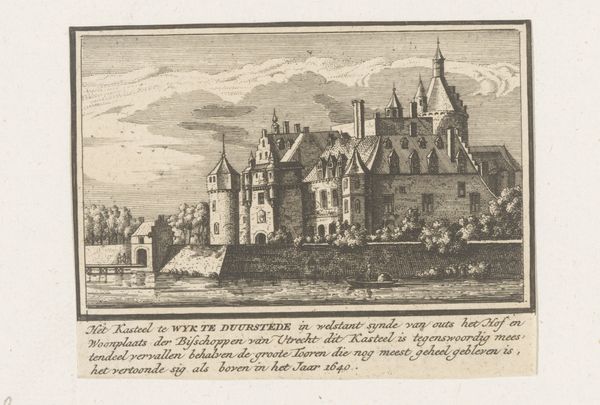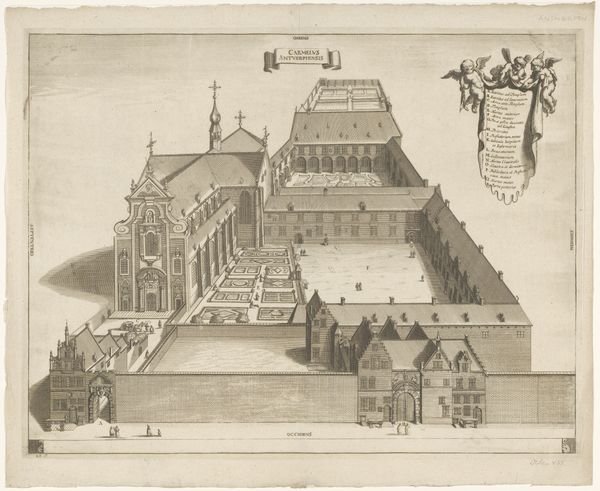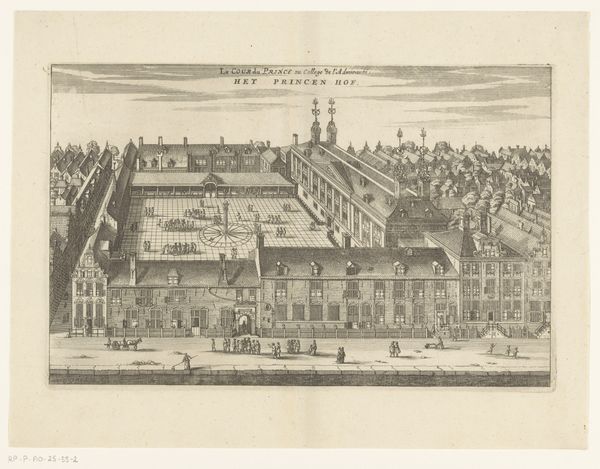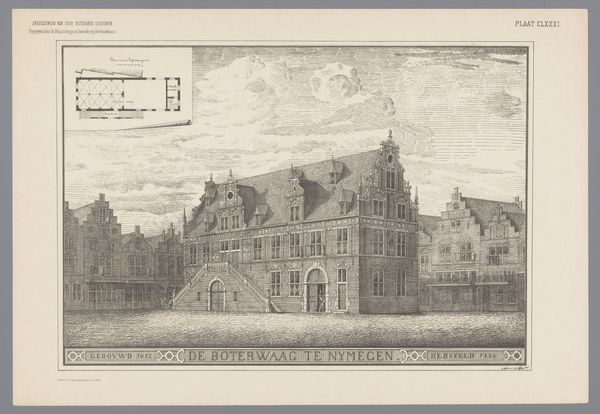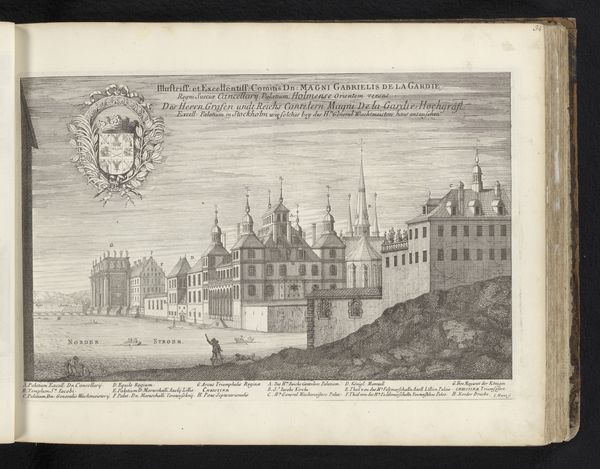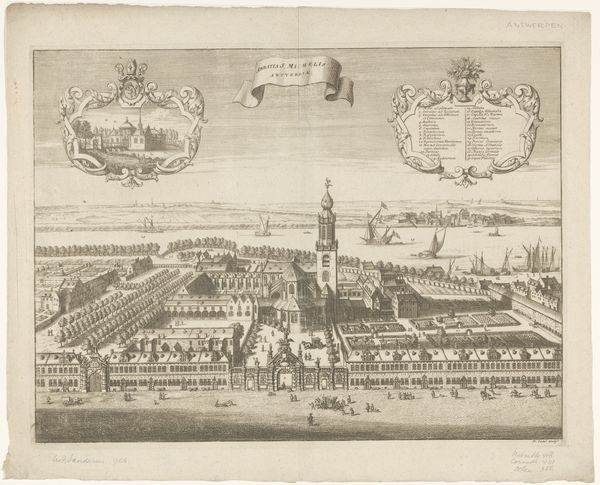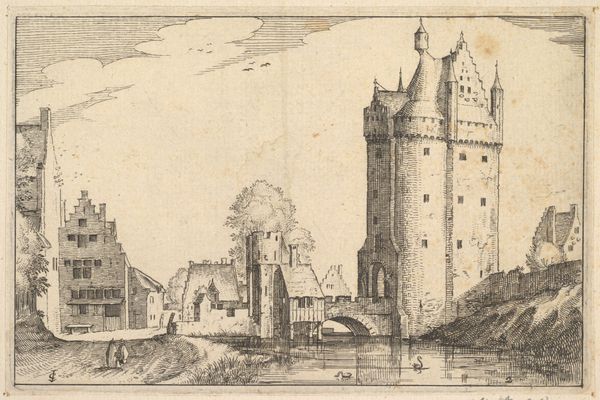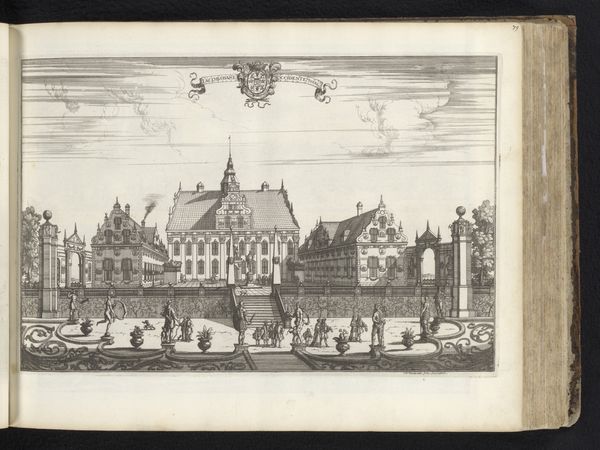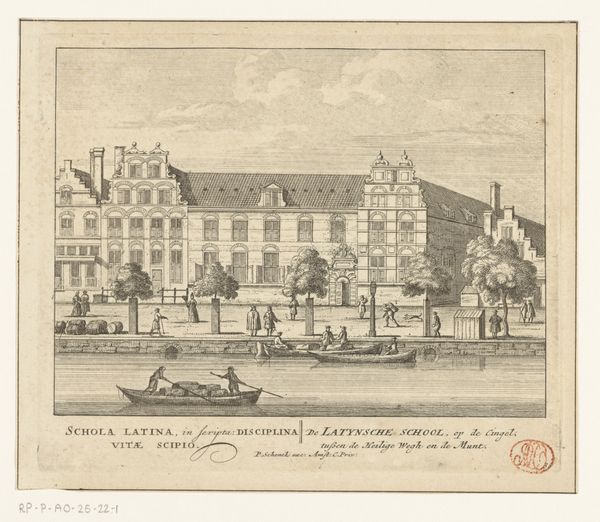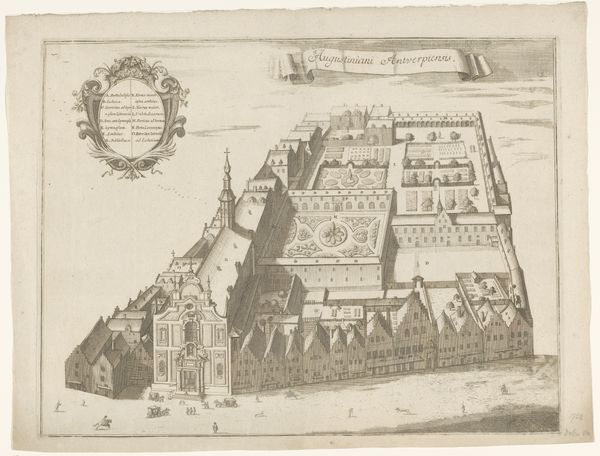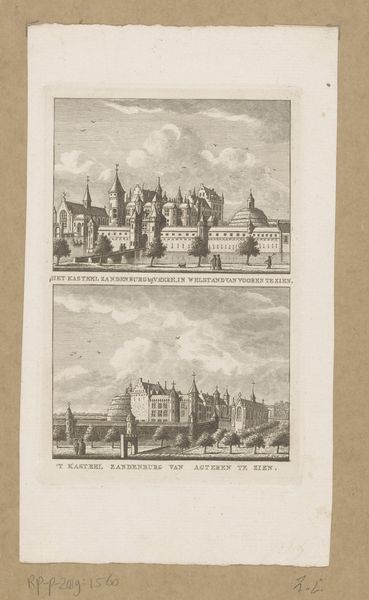
Gezicht op het paleis van de graaf van Vlaanderen bij Lille 1659
0:00
0:00
lucasiivorsterman
Rijksmuseum
print, engraving, architecture
#
dutch-golden-age
# print
#
old engraving style
#
landscape
#
cityscape
#
engraving
#
architecture
Dimensions: height 180 mm, width 235 mm
Copyright: Rijks Museum: Open Domain
Lucas Vorsterman the Younger etched this scene of the Palace of the Count of Flanders in Lille in the 17th century. Dominating the composition are the heraldic symbols, emblems of power, and lineage. Note the crowned shield, a potent symbol of sovereignty. These symbols echo through time, from ancient Roman standards to medieval banners. Shields and crests, laden with lions, eagles, and fleurs-de-lis, recur across centuries, each iteration adapted yet fundamentally linked. Like ancestral memories encoded in DNA, these heraldic motifs resurface, embodying the collective aspirations and anxieties of successive generations. Consider the lion, for instance. From Mesopotamian reliefs to Richard the Lionheart's standard, it symbolizes courage and dominion. Its appearance here is no accident; it is a deliberate invocation of authority, a primal assertion of power designed to resonate on a subconscious level. This act of claiming symbolic territory is like a collective, historical dream. Over time, these symbols have been transmitted and transformed, echoing through the corridors of history.
Comments
No comments
Be the first to comment and join the conversation on the ultimate creative platform.
